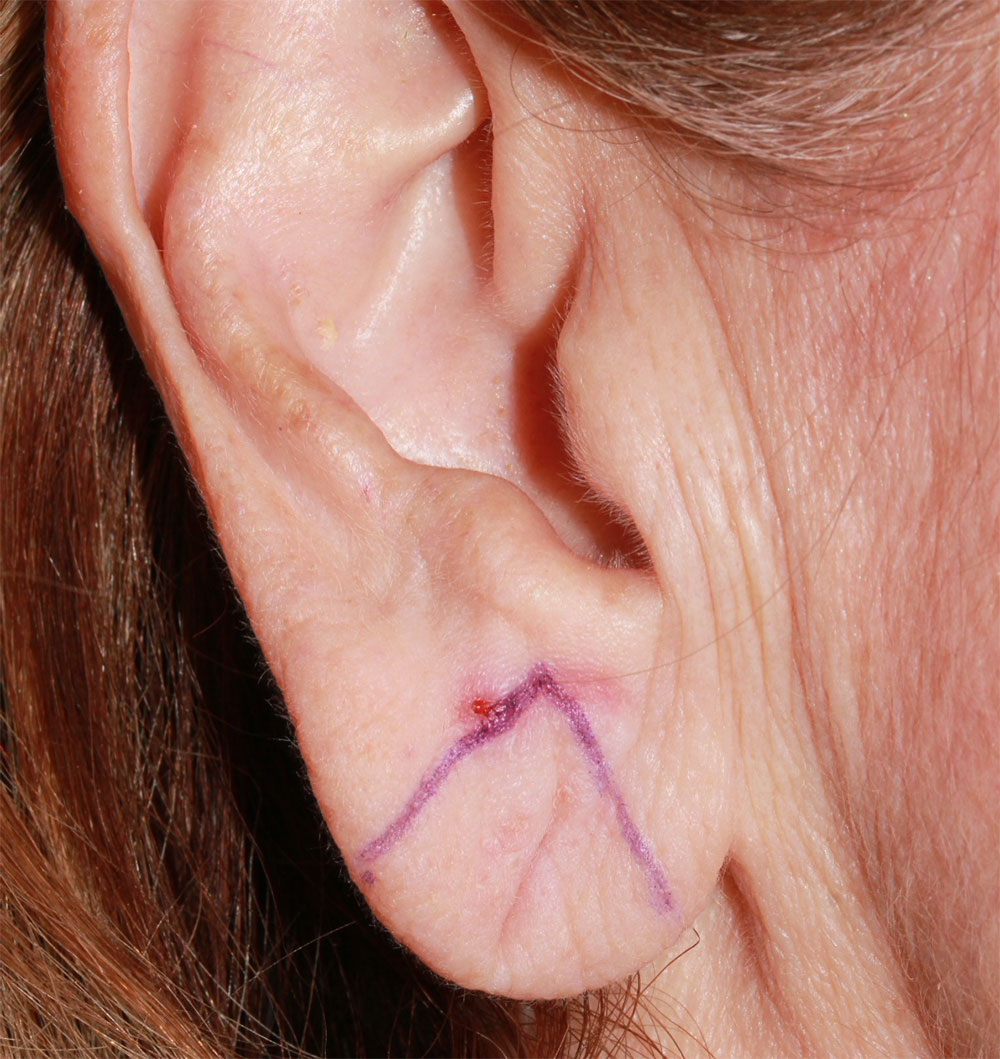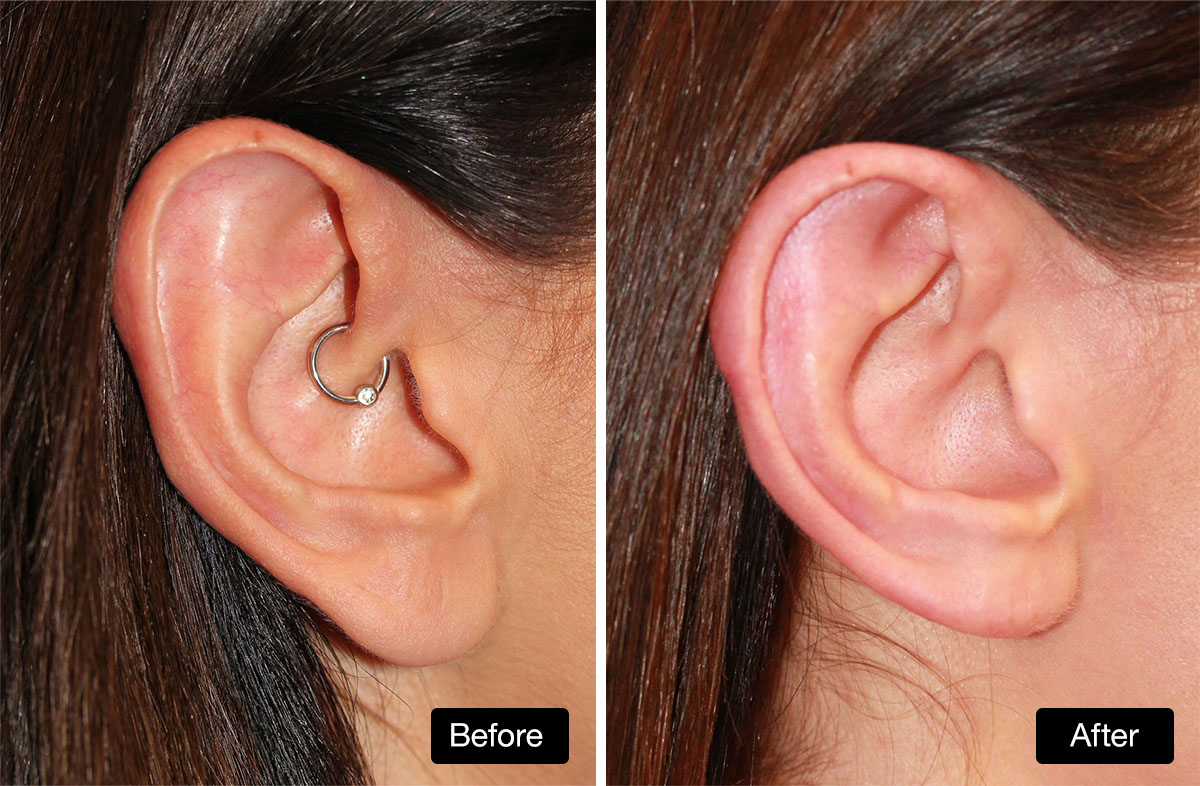The tendency towards large earlobes and floppy earlobes can be inherited. This inherited tendency is enhanced by the lengthening caused by heavy earrings.
Ear Reduction Surgery
The following information sheet is intended to assist patients undergoing ear reduction surgery with Dr Nicholas Lotz.
-
Patient Information
Fact Sheet
-
Tags
Ear Reduction Surgery
ear-reduction-surgery-icon-2
Ear reduction surgery is performed to reduce the size of unnaturally large ears.
Other than being concerned about ears that look big because they stick out from the side of the head, some people are actually concerned about the size of their ears. This can be due to an enlargement of the top portion of the ear (the “scapha”), or the lower part of the ear (the “lobule”).
Anatomy of the ear
The image below shows the external anatomy of the ear.
Correction of excessively large ears can help restore the natural proportions of an ear, and can also help correct size discrepancies between the two ears. This can help you feel more able to have a short hair style or wear your hair up.
Sometimes, if the ears are also sticking out from the side of the head, an otoplasty (prominent ear correction) may be performed in combination with ear reduction surgery.
Before the
surgery
During your initial consultation, Dr Lotz will spend time with you discussing exactly what your concerns about your ears are. Sometimes patients find it helpful to bring along photographs of their own ears that they have altered to give an idea of the results would ideally like. Whilst there is no guarantee that this will be able to be achieved, it is often helpful to get an idea of how much of a change in the appearance of your ears you would ideally like to achieve.
Dr Lotz will be able to show you photographs of other patients who have undergone ear reduction surgery, so you have an idea what to expect with respect to results, recovery, scars and any possible risks. It is important to note that the ears can only reduced to a certain amount, otherwise the relative proportions of the ear can start to look out of balance. Photographs will be taken of your ears during the consultation.
You will be sent an information pack further explaining the procedure, along with a detailed, personalised quotation which explains all the relevant costs pertaining to the procedure as well and any heath fund or Medicare rebates applicable.
Depending on your age and the type of alterations that your ears require, there may be some coverage by Medicare or your Health Fund for the surgery. An exact quotation for you will be provided for you after your consultation with Dr Lotz.
The surgery

Ear lobe reduction - pre surgery image
Ear reduction surgery can be performed either under local anaesthetic in the custom designed operating theatre in the rooms, or in the operating theatre under general anaesthetic as a day-case only procedure.
Depending on the complexity of the case, the surgery will usually take 60-90 minutes.
Surgical Procedure
Surgical Procedure - Upper Ear Reduction
To reduce the upper portion of the ear, an incision is made along the inside of the helical rim where it will be camouflaged, with a small cut across the helix itself. The area to be reduced is removed and the skin stitched with tiny sutures so that the final scars are hidden within the natural folds of the ear. Light dressings are applied.
Surgical Procedure - Ear Lobe Reduction
There are a few different techniques to reduce the size of the ear lobule, depending on what shape it is. These range from either a simple wedge excision, which leaves a straight scar, to an incision which is hidden along the bottom of the ear. Small dressings are applied to this area afterwards.
After the surgery
Post-operative care
Usually the only dressings required are small, skin-coloured tapes designed to hide the stitches. You will be allowed to shower and get the ears wet a day after the surgery. In most cases only simple pain medications like Panadol are required. Most patients are able to return to work a day or two after the surgery.
Follow-up & Recovery
The stitches will be removed a week after the surgery, and you will be given instructions as to how to manage the scars.
The results of the surgery are immediate, and very little swelling is expected once the stitches have been removed.
Risks of ear reduction surgery
- Visible scars (they can be red for a while, or sometimes indented on the helical rim)
- Thick keloid scars (particularly if you have had scarring issues before)
- Infection
- Bleeding
- Dissatisfaction with the proportions of the new ear
- Healing issues
- Asymmetry between the ears
- Puckering at the ends of the scars
- Sensitive or painful ears
Before & After
Case Example: 1

Ear Reduction: Before and After Surgery - reduction of both the lobule and upper part of the ear
Ear Reduction: Before and After Surgery - reduction of both the lobule and upper part of the ear
Before & After
Case Example: 2
![Ear Reduction: 44 yo Male Before and After Ear Reduction Surgery - upper part of ear reduced in size [1A & B]](https://www.drnicholaslotz.com.au/wp-content/uploads/2020/07/ear-reduction-surgery-44yo-male-before-after-1ab.jpg)
Ear Reduction: 44 yo Male Before and After Ear Reduction Surgery - upper part of ear reduced in size [1A & B]
Ear Reduction: 44 yo Male Before and After Ear Reduction Surgery - upper part of ear reduced in size [1A & B]
![Ear Reduction: 44 yo Male Before and After Ear Reduction Surgery - upper part of ear reduced in size [1A & 2B]](https://www.drnicholaslotz.com.au/wp-content/uploads/2020/07/ear-reduction-surgery-44yo-male-before-after-2ab.jpg)
Ear Reduction: 44 yo Male Before and After Ear Reduction Surgery - upper part of ear reduced in size [2A & 2B]
Ear Reduction: 44 yo Male Before and After Ear Reduction Surgery - upper part of ear reduced in size [2A & 2B]
Frequently Asked Questions
ear-reduction-surgery-icon-2
Are large earlobes inherited?
Will my earlobes be perfectly symmetrical after the procedure?
Most patients start with ear lobes that are different. This is taken into account to achieve the greatest symmetry possible, but perfect symmetry is rare both naturally and with surgery.
Is there an ideal age for ear reduction surgery?
This surgery can be performed at any age. Ear lobes will tend to increase in size with age and heavy earrings, but some people are born with large ears and have ear reduction surgery in their early 20s.

